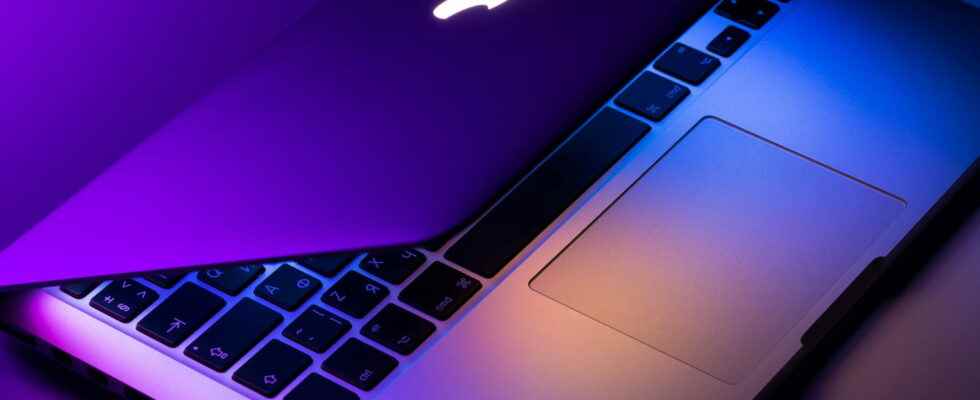Recent MacBooks pose a lot of problems for refurbishers who, due to a security feature, cannot unlock them for recycling. Result: they end up deboned instead of being put back on the market…
One of Apple’s main marketing arguments concerns the security of its platforms and products – a great way to attract more consumers, but also to retain them. But, of course, there is a flip side, and it concerns the ecological impact of the firm. Indeed, the production of a device is the most polluting phase of its existence, because of the extraction of raw materials. Therefore, the longer a piece of equipment will be used, the lower its environmental impact will be.
However, Apple is often singled out for the poor repairability of its devices. Their repairability index fluctuates on average between 4.5 and 6 – and again, he does well because he documents the procedure very well, even if it is complicated, even impossible, which increases his rating. It is this obsession with security that prevents certain Apple products from experiencing a second life. As the media reports Viceremanufacturing companies have a recurring and extremely annoying problem with MacBooks because of the T2 Security and M1 chips that equip them.
Macbook: T2 and M1 chips that lock computers
To From 2018, Apple has integrated a new chip on all its Macs (MacBook Air, MacBook Pro, Mac mini or iMac Pro): the T2 Security chip, a coprocessor capable of protecting users’ confidential data by encrypting SSD data by real time and storing fingerprints. Pretty soon trouble started for repairers, as Apple happens to use this chip to lock out certain repairs via software blocking, forcing users to go to an Apple Store or Authorized Repairer in the event of a breakdown – and Apple to fully control its ecosystem. When the firm at the apple began to produce its own chips – the famous M1 and M2 families, with remarkable performance –, it obviously integrated the functions of the T2.
And it is precisely this security device that poses a problem when it comes to repairing or reconditioning a recent MacBook. Simply put, with T2 and M1 chips, the repairer or refurbisher must launch an application called AST 2 System Configuration, which passes authorization to the chip to let them repair the device. But if the procedure does not go wrong, the MacBook may not work at all. In addition, for laudable security reasons, these MacBooks include a function called Activation Lock, which prevents them from starting in the event of loss or theft, the only way to unlock them being to enter the password of the owner iCloud account. Without this information, resellers cannot list the device for sale. And this is where the problem arises.
In a post on Twitter, dealer John Bumstead explains the full complexity of the situation. Most of the time, MacBooks to be refurbished come from companies or schools that have not deactivated the accounts configured on them. As it can receive up to 3,000 computers from a single client, it is impossible to obtain all the passwords necessary to unlock the computers once the repairs have been made. It is then impossible for the professional to completely and cleanly reset these laptops to give them a second life on the second-hand market.
As I predicted years ago, Activation Locked T2 MacBooks are flooding into recyclers (15 of these are 2020 M1!) Recyclers willing to violate the R2 cert sell to uncertified barbarians like me who use them for parts, but most just scrap due to liability paranoia . #righttorepair pic.twitter.com/uvsQZK8nJR
— John Bumstead (@RDKLInc) January 17, 2023
In the end, there are tons of recent and fully functional machines that end up completely unusable. Refurbishers are therefore forced to dismantle computers to resell the spare parts. But the motherboard, on which the T2 or M1 chip is soldered, still cannot be unlocked and therefore ends up in the grinder, which produces unnecessary electronic waste. Suffice to say that simple chips weigh heavily on Apple’s carbon footprint!
MacBook: no solution for the refurbished market
The problem encountered with the T2 and M1 chips is not new, but as time passes, more refurbishers find themselves confronted with it since the life cycle of computer equipment in large companies is around three years. Also, it is important that people who want to resell a Mac device running on an Apple Silicon chip tomorrow check “Erase all content and settings” when resetting their computer. Despite everything, the Apple would have to quickly put in place a solution to unlock its machines.
John Bumstead has already proposed a solution to the problem to Vice. “When we come across a locked machine that was acquired legally, we should be able to log into our Apple account, enter the serial number and any given information, then click a button and submit the machine to Apple to unlock it”he explains. “Then Apple could dig through its records, interview the original owner if it wants, but at the end of the day, if there’s no alert and the original owner doesn’t protest in 30 days, the device should be automatically unlocked.” It remains to be seen whether the Apple firm will seek to solve the problem, because who says refurbished devices says fewer sales of new devices, and therefore less comfortable for them…
